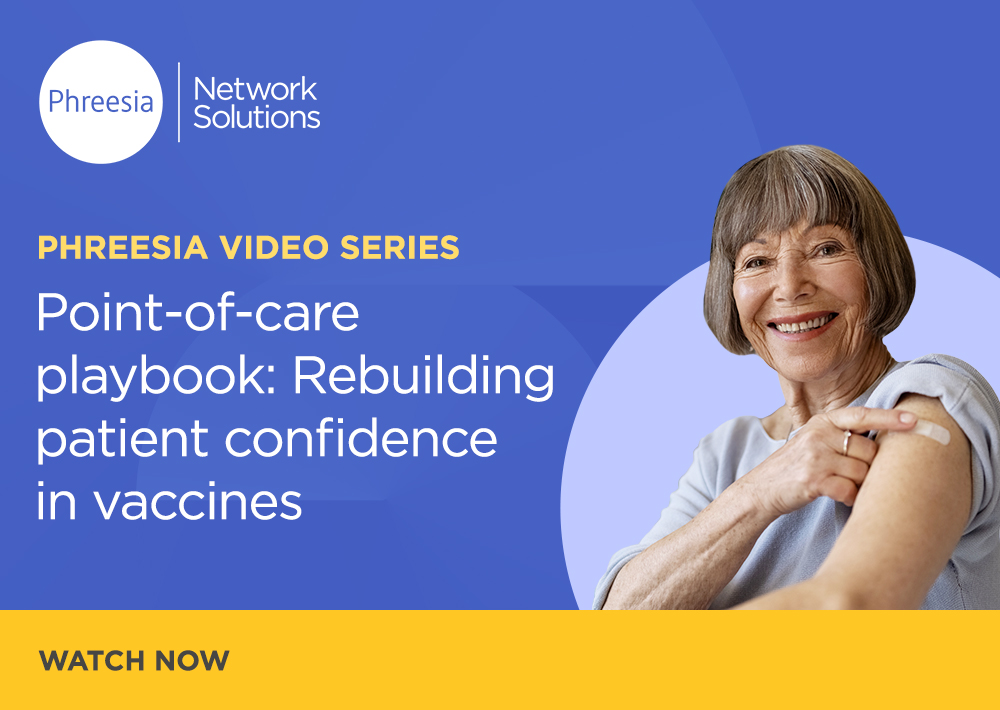
Over the years, Phreesia has supported several large-scale population health campaigns to improve outcomes and reduce avoidable health risks.
A healthier America starts with addressing the everyday factors that drive better outcomes—managing chronic conditions, increasing preventive health measures, encouraging timely screenings, supporting better nutrition, promoting healthy lifestyles and exercise, managing stress and more. Yet across these areas, significant gaps remain. Understanding and adoption of healthy behaviors can be confusing. Screenings are often delayed. Many chronic conditions go undiagnosed or untreated. Almost 19 million Americans live in food deserts. An alarming number of adults report feeling stressed or anxious.
Underlying many of these persistent gaps is a deeper issue: Too many Americans don’t have the information, tools or support they need to feel empowered to take back control of their health. Bridging these gaps starts with better communication and education, especially at the moments when people are most ready to listen and act.
Education drives action
Closing these persistent health gaps starts with timely, personalized education delivered in the right context. When patients receive educational health content in the moments before, during or after a healthcare appointment, they’re more likely to engage, ask questions and take the next step in their care journey. That’s because the point of care is a uniquely influential moment: Patients are already in a health-focused mindset, so specific, relevant messaging shapes attitudes about how people take care of themselves, supports doctor-patient conversations and drives action. Providing health education materials at these critical moments can help people better manage chronic conditions, reduce risks and improve their overall health and wellbeing.
“To improve public health outcomes at scale, organizations must meet people where they are—and there’s no better moment than when they’re already thinking about their health,” says Kelsey Pratt, Director of Market Development at Phreesia. “Digital point-of-care education is one of the most effective, underutilized tools to drive behavior change.”
For more than 20 years, we’ve been driving innovation in healthcare, including pioneering the personalized point-of-care model. While others relied on static wallboards and waiting room TVs—channels that patients often ignore—we’ve leaned into the digital habits of today’s consumer by delivering personally relevant, private content directly to patients’ own devices. We meet them where their attention already is—on their phones. It’s a seamless, familiar experience that drives deeper engagement and delivers more meaningful impact.
How Phreesia empowers individuals to pursue preventive care and other public health goals
Digital health education delivered at the point of care can support a wide range of public health goals—from preventive screenings to chronic disease management and lifestyle changes. Over the years, Phreesia has supported several large-scale population health campaigns to improve outcomes and reduce avoidable health risks.
“From healthy behavior change to chronic disease management, we’ve seen that when organizations invest in personalized, timely health education, people respond—and outcomes improve,” Pratt says.
Together with our partners, we’ve designed and delivered campaigns that not only educate, but also drive measurable change at scale, supporting national health priorities like promoting evidence-based prevention, driving recommended health behaviors, supporting pediatric health, improving outcomes and reducing healthcare costs. Our campaigns help individuals take meaningful steps toward better health. For example:
- Educating individuals about healthy lifestyles: After seeing a campaign about heart health, 15% of patients surveyed said they learned that eating smart can make your blood vessels and heart work better, and 14% said they learned that even simple exercises like walking can have a big impact on heart health.
- Supporting cancer screening:
- Phreesia’s survey data shows that 12% more patients underwent mammogram screening after viewing related content, compared to the control group.
- Patients 50-80 years old with a history of smoking who had never been screened for lung cancer were 182% more likely to get screened for lung cancer after seeing a campaign.
- Driving vaccination: A respiratory virus campaign designed to educate eligible patients about respiratory virus vaccines, like those that protect against flu, drove thousands of patients to have conversations about their personal needs for vaccines with their healthcare provider. Third-party conversion analysis showed that nearly 42,000 incremental vaccine administrations were attributable to campaign messaging.
- Using new technology to support preventive care: Of patients with diabetes surveyed, 42% said they were very likely or extremely likely to talk to their healthcare provider about glucose monitoring with a continuous glucose monitor after seeing a campaign on Phreesia.
- Getting diagnosed with serious and rare conditions earlier:
- More than 300 at-risk patients were diagnosed with a rare cardiovascular condition after seeing a campaign about the warning signs and symptoms.
- A lung cancer screening campaign on PatientConnect drove 581 high-risk patients to pursue screening, and they were ultimately diagnosed with lung cancer, helping avoid more expensive, late-stage care.
- Adhering to what their doctors prescribe: After viewing content related to rheumatology medications, 80% of rheumatology patients surveyed after a campaign said they are likely to stay on their treatment.
Campaigns on our platform have motivated hundreds of thousands of patients to take action—getting screened for cancer, receiving important vaccinations, starting a new medication or adhering to their treatment plan, quitting smoking, losing weight, or simply having important conversations with their doctor about health risks.
Help drive population-level impact across the nation. Learn how Phreesia can support your healthy behavior goals. Request a demo today.


